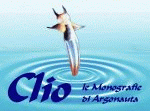
Clio Supplemento a Argonauta 7-12 2012
 |  |
Marmorana serpentina (Fèrussac, 1821)
Le foto che seguono rappresentano esemplari toscani e sardi. Come si può facilmente notare, le differenze cromatiche, in particolare, sono veramente eclatanti e, insieme alle differenze meno notevoli di forma e dimensione, possono giustificare i vari taxa descritti negli anni passati. Non entro nel merito dei valori tassonomici. La mia opinione è di credere che, per questa specie, si tratti solo di “varietà” ed in nessun caso si possa dubitare di qualcosa di più. La Marmorana serpentina, presenta una colorazione assai variabile ed una ornamentazione che ricorda, appunto, la pelle di un serpente, da cui il nome della specie. In tutti gli esemplari, esaminati dalla base, si notano generalmente due bande delle quali, la più esterna, talora unita, più scura ed una più interna, quasi sempre più frammentata e talora impercettibile. Ovviamente tali bande non sono presenti negli esemplari bianchi che, con una certa frequenza, si rinvengono ad Isili (Cagliari) , nella località che ha dato il nome ad una delle varianti della specie. Tale variante non corrisponde ad esemplari albini in quanto le parti molli sono pigmentate come negli esemplari dalla conchiglia colorata. Sempre esaminando la base si riscontra, costantemente, una macchia bruno scuro nell’area columellare, tale macchia può essere più o meno estesa e più o meno scura, ma l’ho sempre riscontrata, salvo un caso particolare, quello di alcuni esemplari raccolti in zona Buggerro (Carbonia-Iglesias), e verso Cala Domestica dove tale macchia non è presente e gli esemplari somigliano in maniera notevole a Eobania vermiculata ma dalle dimensioni decisamente piccole per tale specie. Le variazioni di forma generale e di colorazione sono però tali da rendere talora arduo ascrivere alcuni di essi all’una o all’altra specie, per quanto ciò possa apparire poco credibile. Marmorana serpentina è, nonostante la variabilità, una specie ben individuata e dall’areale ben conosciuto. | The following photos are examples from Tuscany and Sardinia, as one can easily see, the color differences, in particular, are very striking and, together with less significant differences in size and shape, may justify the different taxa were born to describe them in the past. I do not go into the merits of taxonomic value, my tendency is to believe that, for this species, it is only "variety" and in no case can doubt something more. The Marmorana serpentina, has a highly variable color and a pattern reminiscent of the skin of a snake, hence the name of the species, in all the specimens, as seen from the base, you can see generally two bands of which the outer, sometimes combined , darker and a more internal, more and more fragmented and sometimes almost imperceptible, of course, these bands are not present in the specimens white, with some frequency, are found in Isili, the town that gave its name to one of the variants of the species , this variant does not match albino specimens as the soft parts are pigmented as in the specimens from the shell color. Always looking from the base there is constantly a dark brown stain in the columellar, the stain can be more or less extensive and more or less dark, but I've always found, except for a particular case, that of some specimens collected in Buggerro area and towards Cala Domestica where this stain is not present and the specimens resemble up substantially in Eobania vermiculata but the size decidedly small for that species, the variations of the general shape and coloration, however, are such as to make sometimes difficult to ascribe some of them one or the other species, although it may seem hard to believe. Marmorana serpentina is, in spite of the variability, a species well recognizable with the areal well known. |
